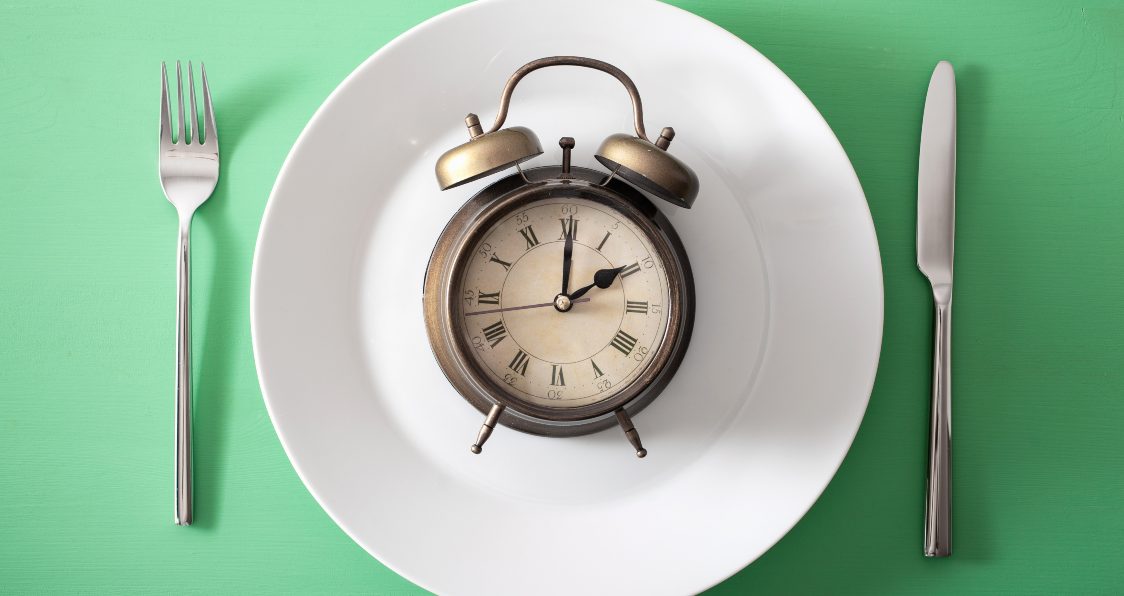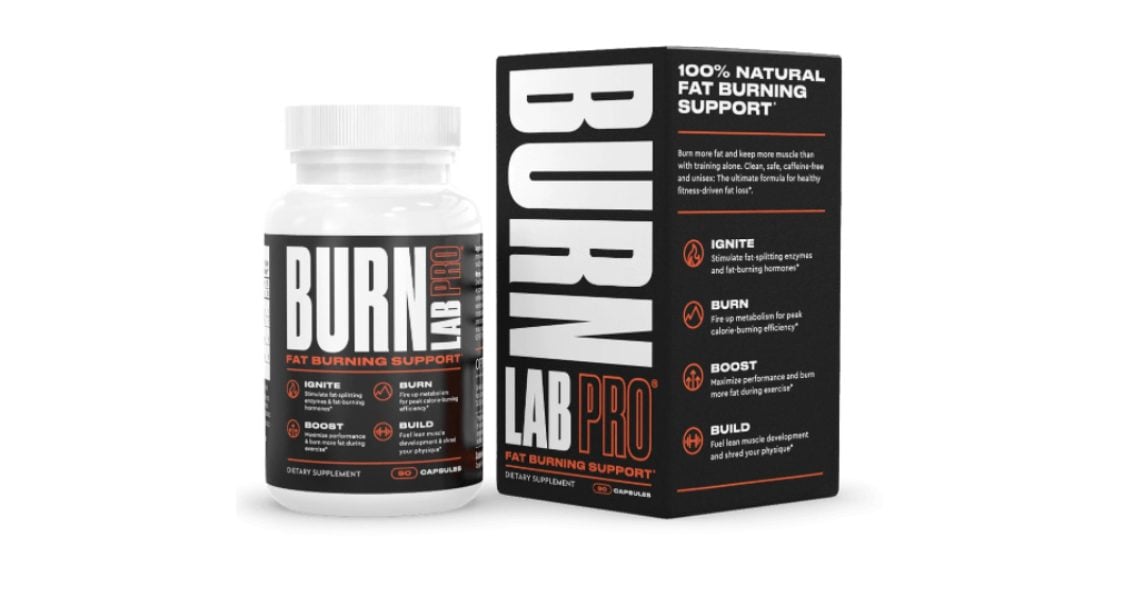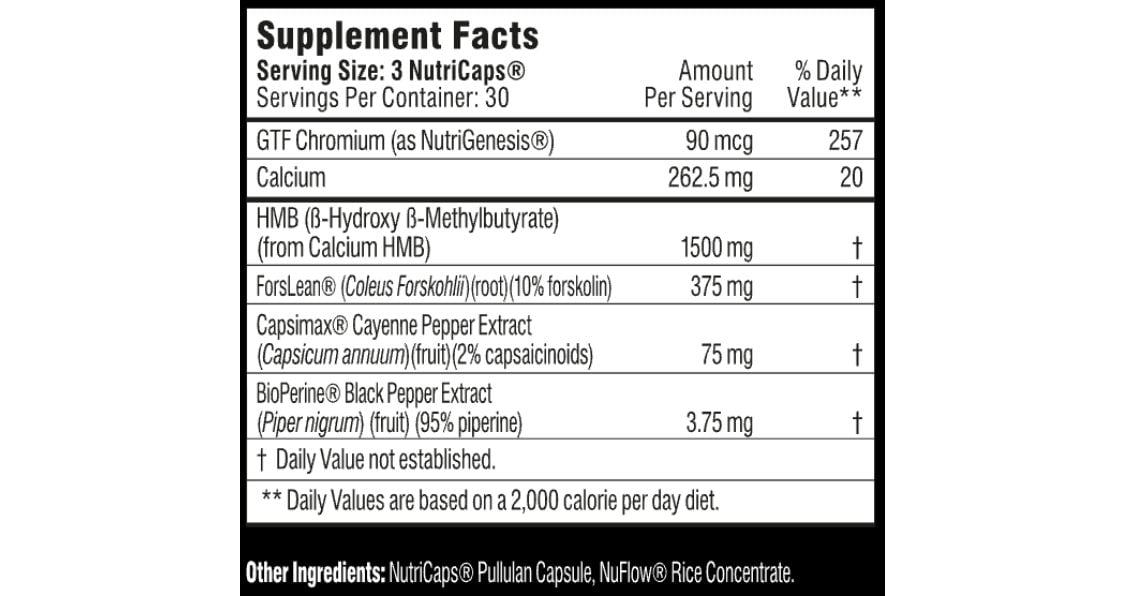
For those into intermittent fasting, this is the best fat burner to see gains.
Maybe it’s because you’ve found yourself with more time on your hands to cook, or you’re no longer up and out the door at 6 AM. Maybe you haven’t been able to go to the gym as usual, or you’re just ready to kick off a new, healthier lifestyle.
Whatever your case, you’ve come here with intermittent fasting in mind.
Completely revamping your diet takes courage, discipline, and preparation. We all come into it with a certain expectation or end goal. Inevitably, that means you’ll experience both frustration and jubilation along the way. If your goal is fat loss, intermittent fasting is a huge first step. It can control insulin levels, regulate your body’s natural cycles, reduce unnecessary snacking, and, in the end, restrict caloric intake.
But that’s just one piece of the puzzle. You probably understand that what you eat, not just when you eat it matters too. And that brings us to fat burners.
If you want the quick answer, then go straight to our #1 Fat Burner For Intermittent Fasting…
Burn Lab Pro

Burn Lab Pro is a great all-around fat burner with an innovative design and research-backed benefits. It is 100% natural, safe, and caffeine free giving you the best option on the market.
As an oft-touted supplement for instant results, do they really work? Could/should you take the best fat burner for intermittent fasting?
That depends. Combined with a well-adjusted diet, fat-burners accelerate fat loss by enhancing metabolism, reducing cravings, and increasing intra-workout energy. The best ones even go the extra mile to protect against muscle breakdown.
The right fat burner can:
- Accelerate metabolism
- Increase mobilization of stored body fat (to be used as energy)
- Fight against hunger and cravings
- Reduce muscle breakdown
- Improve lean body mass
- Keep you healthy overall
Unfortunately, the wrong fat burner is loaded with stimulants such as caffeine, substandard ingredients, and flat out lies. Buyer beware of anything that guarantees completely unrealistic results. While, on the surface, these fat burners might sound good and make you feel like they’re working, they’re not necessarily effective at the cellular level. Sometimes, they can even make matters worse.
So, what should you look for?
Well, here’s the hard truth. There is no magic pill.
You’re going to have to work for it – and that means combining daily exercise with a healthy dose of lean proteins, lots of fiber, good fats, and fruits and vegetables. 8 hours of sleep. Lots of water, especially during a fast. You know the drill. A good fat burner simply accelerates those efforts, making your life a little easier. It’s like hopping on a bike vs running somewhere. You still have to pedal, but you’ll get there faster than if you just ran.
With that being said, how do you pick through the weeds to find one that works during intermittent fasting? Fortunately, we did the hard work for you.
In this article, we’ll take a look at the science behind both fat burners and intermittent fasting, and how combining the two could work for you, including:
- A brief overview of intermittent fasting
- The science behind combining fat burners and intermittent fasting
- Which ingredients to look for
- ….AND ultimately, our pick for the best fat burner for intermittent fasting

A Short Overview Of Intermittent Fasting
What’s the point of intermittent fasting?
Everything in our body runs on some sort of rhythm, including our sleep/wake cycles [1], thermoregulation, hormones, and more. If you think about it, even without intermittent fasting, your digestion does as well. That’s how breakfast got its name – you’re not eating for hours while you sleep.
However, how often do you sleep in on weekends, or go to bed later than you planned, finishing up work? Even if our sleeping hours remain the same, sometimes we skip breakfast or eat a big lunch and miss dinner. Eating affects all of our activity, energy levels, hormonal responses, and sleep included. By restricting our feeding to a specific window, we gain better control of our function. Optimal function leads to optimal results.
To be honest, most people are already intermittently fasting, even without trying. Eight hours of not eating? If you’re getting even close to enough sleep, you’re likely already fasting at night. Hence the term break-fast. By simply extending that fast, you’ll not only spend fewer hours eating but add more hours of activity to counterbalance it. The simple awareness of when and what you’re eating compared to your activity is enough to make a difference at the start.
How it works
As mentioned briefly, diligence and an eating schedule prevent snacking or unintentional overeating. The main takeaway from intermittent fasting is as simple as any other diet – caloric restriction.
Even a slight calorie reduction, over the long-term, will yield results. But, since “eat less, move more” isn’t enough for most people, we’ll introduce another smaller, yet still significant, benefit of IF.
Even if you were to eat the same amount of calories (just shrunk to a certain window), IF hacks your hormonal response. This patterned eating works along with existing cyclical patterns, such as insulin, ghrelin, and leptin release. It also affects cortisol and other endocrine regulators. Normally, when you eat something, your insulin spikes in an attempt to move sugars from the bloodstream into the cells. However, when we’re not immediately working out (and our glycogen stores are full), that spike in blood sugar is useless for energy. So we’re left with a ton of elevated insulin with no job to do.
Eventually, your cells start resisting insulin, as it’s basically the hormonal version of crying wolf. Insulin resistance is associated with obesity, heart disease, and diabetes. Science has shown that intermittent fasting [2] raises insulin sensitivity to stave off weight gain and other more serious conditions.
To make matters worse, you can also become leptin resistant. Leptin, a hormone secreted from adipose tissue and other areas, actually decreases hunger. Yay! Good sign if you’re concerned with fat loss, right? Well, the problem is the more fat you have, the more leptin you make. And, much like the insulin case above, with too much overeating, especially of processed foods and fructose [3], your brain just ignores it. On the contrary, lean body mass helps you burn calories without leptin resistance, but we’ll get to that a bit later.
Leptin’s counterpart, ghrelin, increases hunger. As the two represent opposite ends of the scale, you need a healthy dose of both for balance. They should be released, do their job (signal “eat now” when you’re low on energy or “stop eating” when you’ve had enough), and that’s the end of it.
Now, it’s worth mentioning that this is a vastly oversimplified explanation [4] of a small piece of the endocrine system. Which brings me back to the point – the main benefit of intermittent fasting is that it helps you eat less. And, instead of wasting away muscle like you were on a deserted island, there are a few tricks to get that lean look you’re looking for. One of them obviously, is weightlifting and bodybuilding. Another is proper macronutrient balance.
And finally, there are fat burners.

The Science Behind Fat Burners & Intermittent Fasting
Fat burners (the ones that work, at least) mobilize fat from adipose tissue to metabolize for energy. Supplement companies design fat burners with ingredients to trigger certain enzymes and hormones. For example, the enzyme adenylate cyclase increases the concentration of cAMP, a compound that regulates metabolism and activates downstream fat breakdown. Good fat burners include natural compounds that turn on these keys to weight loss.
But before we get into the science behind combining a fat burner and intermittent fasting with exercise, let’s get one thing out of the way…
…The myth that a specific diet burns more fat than anything else.
This may be hard to hear, given that we’re talking intermittent fasting. Yes, intermittent fasting can help immensely with cravings control, lowering caloric intake, timing nutrients around activity (and therefore postprandial hormonal response), and more.
Yet no diet actually burns fat. By definition, eating adds nutrients and calories to your body. How you control that intake relative to your activity and overall health makes the real difference. Often when utilizing intermittent fasting, you have to literally fight through signals of “I’m actually starving” for long periods of time, somehow function at work and as a family member, and keep it that way. It can work for those who are willing and able, but it’s absolutely not necessary for fat loss.
Remember back above?
Your body is already burning fats during regular existence. The real trick is limiting intake. Sure, you might be able to extend the threshold of exercise during which you burn fat. But you could also just eat clean, control portions, build some muscle, and actually enjoy food every once in a while.
Fancy names like “intermittent fasting” confuse people into thinking it’s a magical fat burning solution. While it can shift the energy source toward actual utilization, it can also limit muscle growth at the start. It works for some, and it doesn’t for others. It’s all about working with your lifestyle instead of battling against it. And that’s where a fat burner can help.

Taking Fat Burners While Intermittent Fasting
For intermittent fasters, one of the most important roles of a fat burner isn’t even torching fat. It’s muscle preservation. Molecules like beta-hydroxy-beta-methylbutyrate work to prevent the aforementioned protein breakdown during fasted training. Beta-oxidation [5], a big step in fat metabolism, occurs within the mitochondria. As muscle cells are chock full of mitochondria, it’s pretty important to keep your muscle tissue in order to lose fat. Not to mention that most of us want to be toned as well as lean.
When the powers combine – fasted training
If you haven’t caught on by now, a good combination of Intermittent fasting, sleep, and regular exercise is your best bet. But once you have all of those ducks in a row, if you want to maximize fat loss/lean body mass, there’s fasted training.
Again, this goes back to our friend insulin. When fasted, insulin levels are low and so is blood sugar. That means your body will go hunting for fuel, often in the form of fat. Training at the end of your fast both helps your body use fat for energy during a workout and refeeds your hungry muscles immediately afterward. In an absence of elevated blood sugar, you’ll dig into other resources to generate ATP. Then, after you get a great workout, it’s time for a meal. Eating elevates blood sugar and spikes insulin, moving the much-needed nutrients directly to your tired muscles. That way you’re not only restricting calories, but you’re building muscle while burning fat as well.
In summary, experts recommend training on an empty stomach for two primary reasons:
- For one, most people don’t feel great working out just after eating, BUT…
- It’s a hormonal hack that allows you to burn fat. Since there’s not any food in your bloodstream, the body goes looking into the fat stores for energy. You need lots of energy for a tough training session, so that’s where the fat-burning effect arises.
Unfortunately, there’s another source of energy during a perceived metabolic emergency – muscle tissue [6]. Yes, you can generate blood sugar from protein in a process called gluconeogenesis. Through catabolizing existing proteins within muscle, you can recreate usable glucose to feed your mitochondria.
Yet most of us would like to keep our muscles, thank you, and a good fat burner can help.

Benefit Of Fat Burners
1. They Help Preserve Muscle
We’ve already been over the benefits and drawbacks of training in a fasted state. Yet supplemental fat burners can work against the enzymes that catabolize muscle so that you can focus on the benefits part.
Research confirms that taking HMB, an ingredient in some fat burners, before a workout decreases muscle cell damage.
As a leucine metabolite, it’s a big trigger for muscle protein synthesis. However, even if you haven’t just eaten a bunch of leucine-rich foods, taking HMB combats muscle degradation, leaving you free to train hard on an empty stomach. Then, when it’s time to eat again, you can pack on the physique.
2. They Mobilize Fat
Ideally, a good fat burner stimulates lipase, a protein that helps us absorb fats.
As the “essential worker” in fat transportation, it catalyzes the breakdown of triglycerides, AKA the building blocks of body fat.
Ingredients such as capsaicinoids release adrenal hormones, shown to promote fat mobilization and oxidation for energy. You could also achieve this result from synthetic stimulants, but those come with a whole host of side effects.
3. They Make Eating A Workout
There’s one more target of fat burner supplements that we haven’t mentioned – thermogenesis.
As the name would suggest, thermogenesis involves creating heat. That heat has to come from somewhere, and why not your fat?
Studies have shown that thermogenesis [7] is associated with weight loss.
Thermogenesis becomes even more important in cases of intermittent fasting. That’s because food has its own thermic effect [8].
It takes energy to digest food and distribute nutrients across the body. During a fast, we miss that signal altogether. That’s why a fat burner can make a difference.

Top Fat Burning Supplements During Intermittent Fasting
One charred hot red chili burning fire isolated on black glass. Now that you understand how they work, which supplements should you look for in a fat burner? Here’s a list of research-backed ingredients to help you avoid snake oil.
-
HMB (ß-Hydroxy ß-Methylbutyrate)
When the branched-chain amino acid leucine is broken down for use within the body, part of it becomes HMB. BCAA’s like leucine are found in dairy products, eggs, poultry, meat, and fish. HMB is also present in other foods, such as avocado, grapefruit, and cauliflower. Unfortunately, whether a byproduct or food ingredient, it’s not enough to cause any noticeable, immediate effects.
However, when researchers started investigating larger quantities of HMB directly, things got interesting. They found that HMB in larger doses can itself exercise recovery, muscle mass retention, muscle strength, and more. By skipping the leucine phase and extracting HMB, supplement companies and consumers alike were able to capitalize on one of the more potent compounds.
-
Cayenne pepper
More than just a spice, cayenne pepper is a superfood. Featuring compounds called capsaicinoids, cayenne pepper is a powerful biological stimulant. By working its magic, cayenne pepper consumption can put you in a negative caloric balance.
Research shows that capsaicin intake stifles appetite and reduces intake. It also helps mobilize lipids by activating hormone-sensitive lipase [9], an enzyme that breaks down fat. Finally, in one of its most well-known benefits, it enhances thermogenesis, or the production of heat within the body. A calorie is a measure of heat, so the more heat you use, the more calories you lose.
Overall, adding cayenne pepper (and all of the capsaicinoids within) to your diet helps increase energy expenditure and reduce caloric intake.
Hailing from black pepper, piperine adds its own little kick. It, too, increases metabolism through thermogenesis, without triggering insulin secretion and breaking your fast. But what’s even cooler about piperine is its bioenhancement qualities [10]. Essentially, adding piperine to other supplements and foods helps your body to absorb them. Rather than literally tossing half of your fat burner down the toilet, piperine makes sure it gets into your body where it belongs
Another natural ingredient, forskolin [11] comes to the supplement shelves from an herb called Coleus forskohlii. If you’ve never heard of it, you’re not alone. Its popularity has just started to rise in the West, but it’s been used in ayurvedic medicine for centuries to lower blood pressure.
However, another one of its benefits is activating adenylate cyclase, an enzyme that mediates metabolic reactions. It gives the green light to stimulate cyclic AMP and lipolysis. For best results, combine forskolin with other fat-burning agents, as well as regular exercise and a controlled diet.
…And you’ve already got that diet part down, thanks to intermittent fasting.
Our #1 Fat Burner During An Intermittent Fasting Diet

Here’s the thing – just by reading this article, by showing interest in intermittent fasting, and by making it to the bottom of this page, it shows you’re invested. You could have fallen prey to any random, synthetic fat burner on the internet, but you didn’t. Instead, you invested in taking something that’s effective, healthy, and targeted. You value things that combine high-quality ingredients with a proven track record. Why would you scrape the bottom of the barrel when you could have the best?
Without further ado, we recommend…
Burn Lab Pro

Burn Lab Pro is a great all-around fat burner with an innovative design and research-backed benefits. It is 100% natural, safe, and caffeine free giving you the best option on the market.
- The company rules the supplement game as far as purity, quality, and safety go.
- They third-party test their supplements within a lab to ensure you only get what’s on the label, and nothing more.
- More importantly, their individual ingredients are all-natural, free of synthetics or additives, and come in plant-based capsules.
It’s also more potent than most. Performance Lab Burn contains 1000mg of HMB, which has been tested to be the minimally effective dose for fighting muscle breakdown.
Look for a supplement that offers HMB as a free acid (some companies attach a calcium salt). Studies show that our bodies absorb the free acid version better, and quicker results follow. And most importantly, understand why you’re taking it. It’ll definitely limit protein breakdown, but that’s only one piece of the puzzle.
HMB might be able to help, but it won’t reach your goals on its own. Fat burning supplements can feature a supporting cast of ingredients, more catalysts to speed up your own hard work.
In theirs, Burn Lab Pro includes black pepper AND cayenne pepper to maximize uptake of capsaicinoids and piperine. The full list of ingredients in their fat burner is as follows:
- 1500 mg of ß-Hydroxy ß-Methylbutyrate
- 3.75 mg Black Pepper Extract, standardized for at least 95% piperine
- 75 mg of Cayenne Pepper Extract, with a minimum of 2% capsaicinoids
- 90mcg of Chromium
- 375 mg of Coleus Forskohlii, at least 10% forskolin

These ingredients can definitely help you lose weight during intermittent fasting on their own. Just scroll back up to get a reminder. But by combining them, Burn Lab Pro becomes four times as powerful, without having to add any harmful synthetics.
PLUS – they include chromium, a natural mineral found in foods such as broccoli, whole grains, poultry, milk, and more.
Research shows that chromium enhances insulin for a healthy metabolism, thus staving off insulin resistance. As such, it can also reduce appetite and promote a lean body composition. While it isn’t a huge factor on its own (read: you don’t need to go out now and stock up on chromium pills), it makes a difference as part of a powerful stack.
Final Thoughts
Intermittent fasting can be hard, especially at the start. But a little fat burner supplement can go a long way to make sure your efforts aren’t in vain. Remember – a disciplined diet and hard work in the gym are the foundation, but a fat burner is the cherry on top. A fat burner with HMB and thermogenic ingredients can work well with intermittent fasting and regular exercise.
Overall, fat burners can be effective… if you choose the right one. Beware the gimmicks and false promises. Choose natural ingredients that will enhance your body’s natural ability to breakdown fat. And continue to train! Again, nothing works unless you do.
Generation Iron may receive commissions on purchases made through our links. See our disclosure page for more information.
Let us know what you think in the comments below. Also, be sure to follow Generation Iron on Facebook, Twitter, and Instagram.
*Images courtesy of Burn Lab Pro and Envato
References:
[1] https://www.ncbi.nlm.nih.gov/pmc/articles/PMC3375033/
[3] https://www.ncbi.nlm.nih.gov/pmc/articles/PMC2584858/?tool=pmcentrez
[4] https://pubmed.ncbi.nlm.nih.gov/12727973/
[5] https://www.sciencedirect.com/topics/biochemistry-genetics-and-molecular-biology/beta-oxidation
[6] https://pubmed.ncbi.nlm.nih.gov/7380688/
[7] https://pubmed.ncbi.nlm.nih.gov/16652130/
[8] https://pubmed.ncbi.nlm.nih.gov/8561055/
[9] https://www.ncbi.nlm.nih.gov/pmc/articles/PMC5414451/
